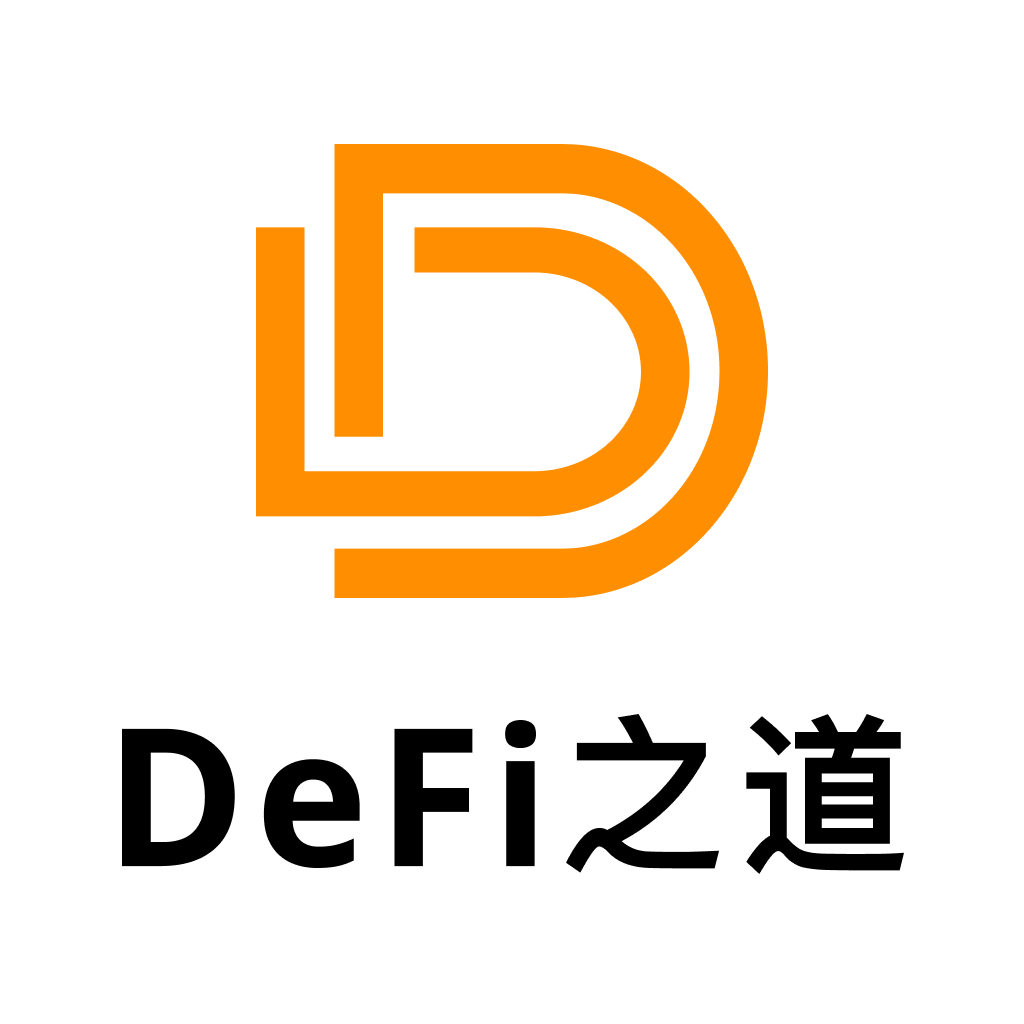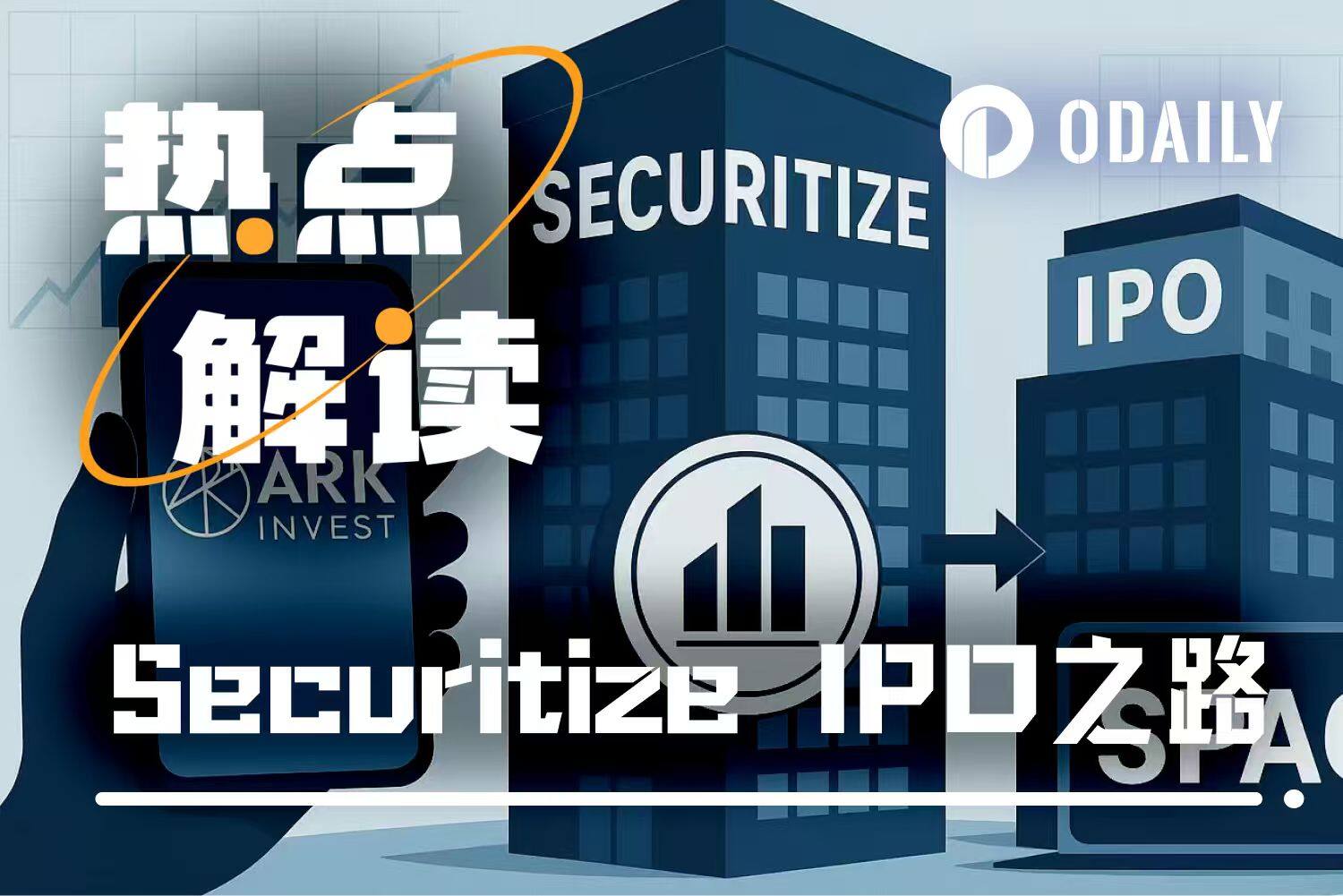이더리움의 평가 프레임워크에 대해 이야기하기: 어떻게 ETH가 슈퍼 자산 클래스에 포함될 수 있습니까?
저자: 마이클 나두
원본 출처:The DeFi Report
원문 편집: The Way of DeFi
저자: 마이클 나두
원본 출처:
원문 편집: The Way of DeFi
이번 주에는 이더리움을 중심으로 레이어 1 블록체인의 평가 프레임워크에 대한 현재 생각을 공유합니다. 항목은 다룹니다:
자본 형성 수단으로서의 토큰
ETH가 슈퍼 자산 클래스 프레임워크에 어떻게 적용되는가

온체인 금융 및 할인현금흐름(Discounted Cash Flow) 분석
디지털 상품 및 가치 저장소로서의 ETH우리가 가장 좋아하는 모니터링 KPI。
토큰이 유용한 이유
이전에 토큰 기본 사항을 자세히 다루었습니다. 관심있으신 분들은 가보시면
여기에서 토큰 경제학 101에 대해 자세히 알아보십시오.
이 보고서의 기초를 마련하기 위해 토큰이 강력한 부트스트래핑 및 자본 형성 도구라고 믿는 이유를 간략하게 반복하고 싶습니다. 이에 대해 이미 잘 알고 있는 경우 이 섹션을 건너뛸 수 있습니다.
간단히 말해서, 토큰은 일반 대중 사이에서 허가 없이 특정 행동을 장려해야 할 때 가장 유용합니다. 토큰은 공유되고 광범위하며 분산된 목표를 향한 활동을 조정하는 데 도움이 될 수 있습니다.
이더리움을 예로 들면, 그 목표는 스마트 계약, P2P 상호 작용 및 사용자 제어 데이터를 활용하여 새로운 인터넷 기반 비즈니스 모델을 강화할 수 있는 세계 컴퓨터 또는 개방형 데이터 네트워크를 만드는 것입니다.
데이터 네트워크에 대한 액세스(또는 편집 권한)를 제어하는 개인이나 단체가 없는 오픈 소스 방식으로 존재하기 위해 Ethereum은 토큰을 발행하고 초기 기여자에게 보상하도록 블록체인을 프로그래밍했습니다. 비트코인의 성공에 힘입어 개발자, 검증자, 노드 운영자, 채굴자 등 전 세계의 개별 기여자와 서비스 제공자의 행동을 조정하는 데 필요한 인센티브를 생성합니다.슈퍼 자산 클래스 프레임워크
전통적인 금융에서는 일반적으로 금융 자산을 3가지 수퍼 자산 클래스로 나눕니다.1. 자본자산
현금흐름을 직접 창출하는 자산. 채권, 부동산 및 주식이 모두 이 범주에 속합니다.2. 소비/변형 가능한 자산:
소비되거나 변형될 수 있고 경제적 가치가 있지만 직접적인 현금 흐름을 창출하지 않는 자산. 예를 들면 옥수수, 석유 또는 귀금속과 같은 상품이 있습니다.
3. 가치 저장 또는 화폐 자산:소득 흐름을 제공하지 않고 소비하거나 전환할 수 없는 자산. 통화, 귀금속(화폐 프리미엄), 미술품 및 수집품을 예로 들 수 있습니다.
ETH와 같은 레이어 1 암호화 자산은 이 프레임워크에 어떻게 적합합니까? 실제로 ETH는 세 가지 슈퍼 자산 클래스의 특성을 모두 가지고 있습니다.
자본 자산:이더리움은 사용자 트랜잭션을 통해 유효성 검사기/블록 생산자가 획득한 현금 흐름을 생성하며 수입은 네이티브 토큰을 보유하고 스마트 계약에 스테이킹해야만 얻을 수 있습니다.
*ETH 자체를 보유하는 것은 배당금을 지급하는 주식이나 채권과 같이 수익률을 산출하지 않습니다. 그들의 ETH는 보상을 받기 위해 거래를 검증하고 네트워크에 서비스를 제공해야 합니다.소비/전환 자산:
이더리움도 상품의 특성을 가지고 있습니다. 점점 더 많은 사람들이 네트워크를 사용함에 따라 ETH가 "사용"됩니다. 이 기능은 블록 공간에 대한 수요가 증가함에 따라 자동 주식 환매와 같은 기능을 하는 소각 메커니즘을 통해 프로그래밍됩니다. 차량과 기계를 작동하기 위해 가스가 필요한 것처럼 이더리움 데이터베이스 또는 그 위에 구축된 모든 애플리케이션을 사용하려면 약간의 ETH가 필요합니다. 지불한 ETH의 약 70-85%가 "소각"되어 순환에서 제거됩니다. 이것이 ETH가 "디지털 오일"과 같다고 말하는 이유입니다. 그것은 디지털 상품처럼 기능하게 만드는 기능을 가지고 있습니다.
가치 저장/화폐 자산:
가치 저장소/화폐 자산의 인식된 가치는 환율과 시장 참여자의 인식에 따라 달라집니다. 예를 들어, 사람들이 미국 달러가 향후 몇 년 동안 정상보다 높은 인플레이션을 경험할 것이라고 믿는다면 미국 달러 대신 금을 보유하고 싶을 수 있습니다. 또는 미국이 더 안정적인 경제라고 생각하면 유로 대신 달러를 보유할 수도 있습니다.
사람들은 시장에서 이러한 항목의 가치가 무엇이라고 생각하는지에 따라 수집품이나 고급 예술품을 보유할 수 있습니다. 일반적으로 가치 저장소 자산은 고유하고 희소해야 합니다. Ethereum(네트워크)의 유용성은 향후 몇 년 동안 증가할 가능성이 있는 반면 ETH(자산)의 공급은 감소하기 때문에 일부 시장 참가자는 ETH를 가치 저장소로 간주합니다.
체인 금융
Aave에서 대출하거나 Uniswap에서 거래하고 싶습니까? 블록 공간에 대한 비용을 지불해야 합니다. NFT를 발행하거나 구매하고 싶습니까? USDC를 가족에게 보내고 싶으신가요? Ethereum 기반 게임을 원하십니까? 모두 블록 공간이 필요합니다.
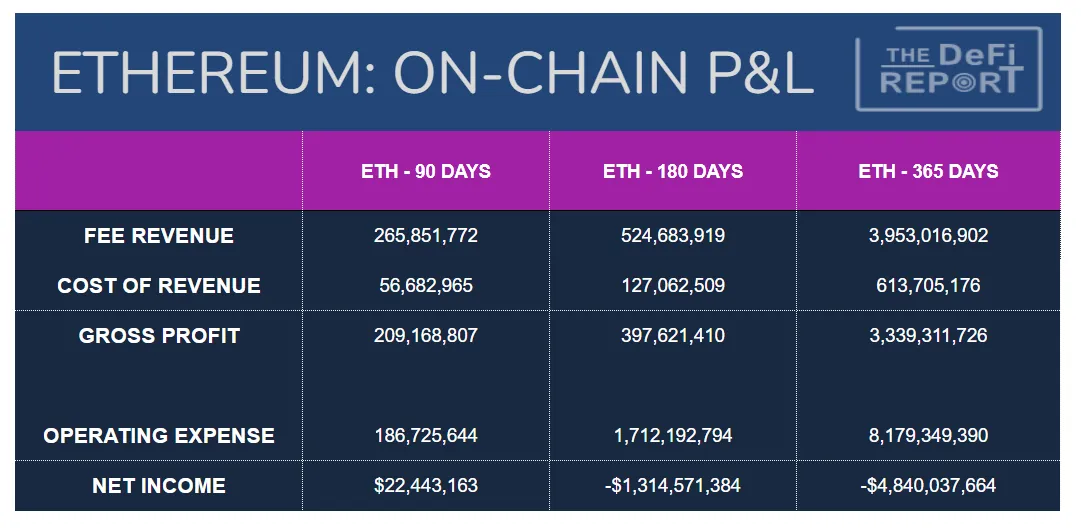
모든 트랜잭션(금융뿐만 아니라 데이터 기록)은 블록 공간 요금을 지불해야 합니다. 사용자는 기본 토큰 ETH를 사용하여 블록 공간에 대한 비용을 지불합니다. Ethereum은 기술 플랫폼이며 Amazon 또는 Apple의 iPhone처럼 생각할 수 있습니다. 하드웨어 판매 외에도 Apple의 iPhone은 개발자가 앱을 만들고 앱 스토어에 올리는 것으로부터 수익을 얻습니다. 따라서 개발자가 사람들이 사용하고 싶어하는 이더리움 플랫폼에서 흥미로운 새로운 비즈니스를 구축한다면 플랫폼을 구동하는 암호화 자산인 ETH는 경제적 가치를 창출해야 합니다.
간단한 온체인 재무 보고 프레임워크를 사용하여 이를 분석해 보겠습니다.이미지 설명
데이터: 토큰 터미널수수료 수익(수수료 수익):
해당 기간 동안 판매된 블록 공간의 총 달러 가치를 나타냅니다.수익 비용:
글로벌 서비스 제공자(검증자)에게 지불하는 수수료의 달러 가치를 말합니다. 작년에 약 15%의 수수료가 유효성 검사자에게 지급되었으며, 오늘날 유효성 검사자의 경우 약 5.1%에 해당합니다.총 이익:
발생한 총 수수료에서 서비스 제공자/검증자에게 지불한 금액을 뺀 금액을 말합니다. 이것은 또한 소각된 ETH의 총 달러 금액입니다. 우리는 이것을 소극적 ETH 보유자에게 이익이 되는 주식 환매라고 생각해야 합니다. 나중에 자세히 설명합니다.운영 비용:
이는 전 세계적으로 서비스 제공자/검증자에게 지급되는 블록 보조금(또는 프로토콜 인플레이션)의 달러 가치입니다. 우리는 이 프로젝트를 이더리움의 보안 예산이라고 생각할 수 있습니다. 합병 후 90% 감소했다. *여기서 블록체인은 실제로 "지불"하지 않습니다. 우리는 이를 기존 주주를 희석시키는 추가 주식을 발행하는 스타트업처럼 생각해야 합니다.순이익:
중요한:블록 공간에 대한 수요가 보안 예산을 초과하는 한 네트워크는 수익성이 있는 것으로 간주될 수 있습니다. 순환 공급이 감소하기 때문입니다(수동적 보유자에게 유리함). 동시에 유효성 검사기(활성 보유자)는 거래 수수료에서 상당한 혜택을 받게 됩니다.
이론적으로 "소각"하거나 순환에서 제거할 수 있는 ETH의 양에는 제한이 없습니다. 거래량과 직접적으로 관련되기 때문입니다. 더 많은 트랜잭션(블록 공간에 대한 수요) = 더 많은 ETH가 소각되고 시장에서 제거됩니다. 그러나 발행할 수 있는 ETH의 양에는 제한이 있습니다. 이더리움 재단의 전방 지침에 의해 결정되며 스테이킹/검증인 스마트 계약에 잠긴 ETH의 양에 따라 달라집니다. 오늘날 순환하는 ETH의 13.8%가 스테이킹 계약에 고정되어 있어 네트워크의 인플레이션 비율은 약 1700 ETH/일입니다.
블록 공간에 대한 수요가 보안 예산을 초과하는 한 네트워크는 수익성이 있는 것으로 간주될 수 있습니다. 순환 공급이 감소하기 때문입니다(수동적 보유자에게 유리함). 동시에 유효성 검사기(활성 보유자)는 거래 수수료에서 상당한 혜택을 받게 됩니다.
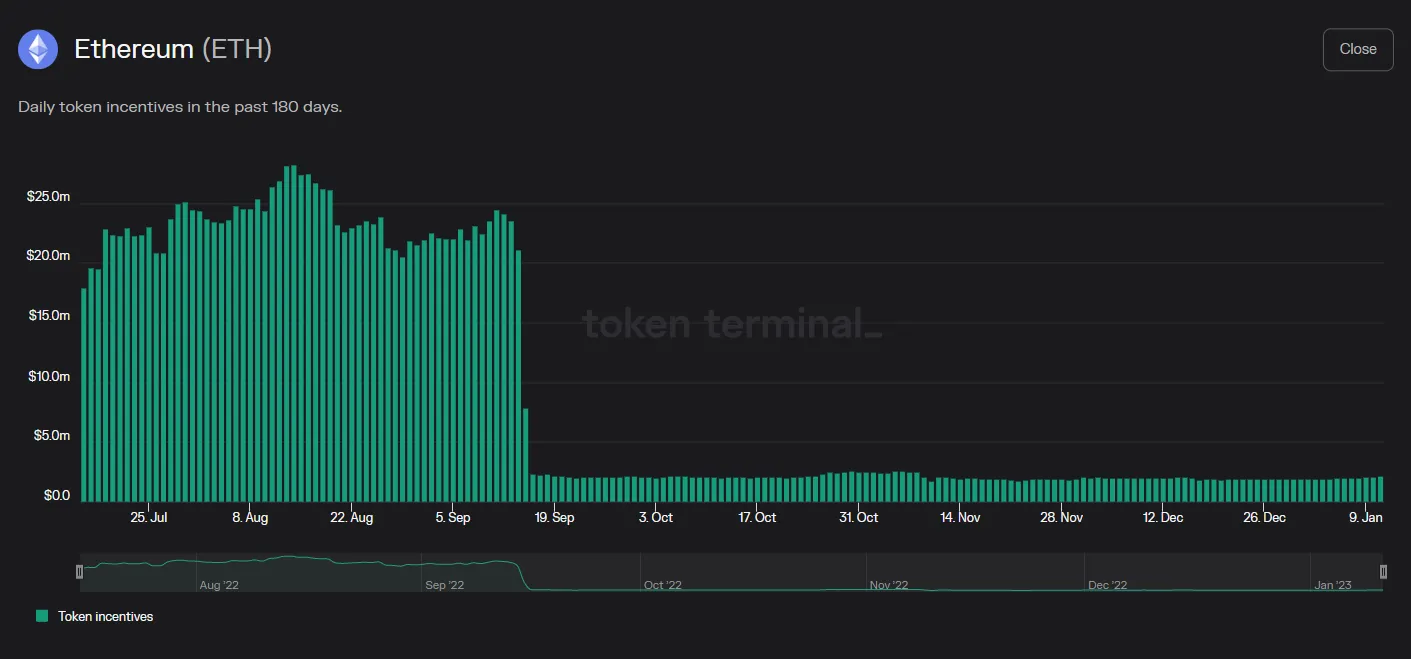
우리는 이것이 암호 화폐의 깊은 약세장에도 불구하고 지난 분기의 경우임을 알 수 있습니다. 손익 계산서를 보면 블록체인이 지난 6개월과 12개월 동안 상대적으로 수익성이 없는 이유가 궁금할 수 있습니다.
수익성 변화는 지난 9월 16일 이루어진 합병에 기인한다. 아래에서 우리는 합병 이후 ETH의 순 신규 발행을 관찰할 수 있습니다.
이미지 설명
데이터 소스: 토큰 터미널
Ethereum Foundation은 광부에게 초과 지불합니다! 이 그래프는 이를 시각적으로 보여줍니다. 언급한 바와 같이 이더리움은 네트워크가 지분증명(PoS)으로 전환된 이후 보안 수수료를 약 90% 삭감했습니다.자본 자산 평가。
ETH의 투기적이고 변동성이 큰 특성으로 인해 시장 가치 및 사용 관점에서 두 가지 다른 현금 흐름 할인을 실행했습니다.2022년 총 거래비용은 연평균 25%, 할인율은 12%, 기간은 20년이다. 이로 인해 시가 총액은 4,160억 달러 또는 완전히 희석된 토큰당 3,459달러입니다. 수수료가 2021년에 비해 2022년에 58% 감소했기 때문에 이는 약세 시장 수치임을 기억하십시오.
다음은 간단한 DCF 계산입니다.
b.2021년 총 거래 수수료, 연평균 성장률 25%. 다른 모든 것을 일정하게 유지하고 2021년 연간 수익을 추정하면 시가 총액은 9,660억 달러 또는 토큰당 8,022달러가 됩니다. 이는 강세장 데이터를 사용한 평가에 대한 아이디어를 제공합니다.
다음은 간단한 DCF 계산입니다.
이더리움은 다른 많은 사용 사례와 함께 글로벌 금융의 결제 계층 역할을 할 수 있는 잠재력을 가지고 있습니다. 따라서 접근 가능한 시장은 매우 큽니다. 이런 관점에서 볼 때 시가총액 1조 달러는 그럴듯해 보인다.
우리는 상당히 보수적인 평균 연간 수수료 증가율인 25%를 사용했습니다. 지난 5년 동안 이더리움 수수료 수입의 실질 복합 연간 성장률은 146%였으며 2022년에는 58%의 상당한 감소가 있었습니다.
이러한 계산은 평가 분석의 출발점이며 투자 조언으로 간주되어서는 안 됩니다. 기간, 할인율 및 평균 성장률은 다양한 시나리오 분석의 필요에 따라 조정될 수 있습니다. 총 거래 수수료를 시작점으로 사용하는 것도 잘못된 가정을 가질 수 있습니다. 마지막으로 ETH의 수동 보유자(비스테이커)와 스테이커/검증자에 대한 별도의 분석이 필요할 수 있습니다.
수익/수익 배수
이더리움은 분산형 네트워크이기 때문에 수수료는 분산된 서비스 제공자/검증자가 부담합니다. 이 수수료는 본질적으로 서약에 대한 대가이며 스테이킹된 ETH의 달러 가치입니다. 온체인 금융 섹션에서 언급했듯이 네트워크 수수료는 검증자 참여를 장려하기 위해 네트워크가 지불하는 프로토콜 인플레이션/수수료로 생각할 수도 있습니다. 일부 분석가들은 네트워크 수수료가 주의를 산만하게 하므로 수익 다중 분석이나 현금 흐름 할인 분석에 포함되어서는 안 된다고 생각합니다. 이 경우 총 수입은 수익금으로 간주됩니다.
지난 몇 년간의 수익을 곱하고 오늘날의 시가 총액과 비교하면 다음과 같은 결과를 얻을 수 있습니다.
2022년: 수익 배수 또는 가격/매출 비율 41배

고성장 기술 회사는 더 높은 수익 배수를 볼 수 있으므로 이러한 수치는 매력적으로 보일 수 있습니다. Tesla는 2021년 강세장에서 수익의 200배 이상에 거래되는 극단적인 예입니다. 아마존은 현재 수익의 86배에 거래되고 있으며 현재 최고 주가에서 45% 하락한 상태입니다.
일일 트래픽
이미지 설명데이터: 이더스캔
합병 후 우리는 하루에 ~1700개의 새로운 ETH를 발행하고 있으며 이는 거의 90% 감소한 것입니다! 이 수치는 스테이킹된 ETH의 총량에 따라 조금씩 변동합니다.
주요 요점:유효성 검사기에는 운영 비용이 없음을 기억하십시오. 따라서 자동 신규 공급 판매 압력의 80%가 사라졌습니다.
마지막으로, 현재 DeFi 애플리케이션에 잠긴 1,800만 ETH가 있으며, 이 금액을 서약 계약에 잠긴 1,600만 ETH에 추가하면 스마트 계약에 잠긴 순환 공급량의 약 28%가 수익 수익을 얻습니다. 우리는 이것을 "유동성 순환 공급"으로 생각할 수 있습니다.주요 요점:
시장은 통합 전에 약 $16,000,000의 보장된 일일 판매 압력을 흡수해야 합니다. 그 판매 압력은 오늘날 크게 사라졌습니다. 실제로 발행된 것보다 소각된 ETH가 더 많았던 시절에는 가격 상승을 막기 위해 구조적인 '자금 유출'이 필요했다. 우리는 약세장에 있지만 Etherscan을 간략히 살펴보면 2023년 현재까지 14일 중 11일에 발행이 순 디플레이션 상태임을 알 수 있습니다.
최근 시장 활동에서 트래픽 변화를 관찰할 수 있습니다.
이더리움은 2022년 6월(합병 전)에 급락하여 약 900달러에 바닥을 쳤습니다. 11월에 우리는 비트코인이 더 넓은 시장을 새로운 최저점으로 이끌었을 때 FTX 충돌(통합 후)과 관련된 또 다른 항복을 받았습니다. 그러나 Ethereum은 그 자리를 지키고 있습니다. 그것은 새로운 최저점을 만들지 않았습니다. 사실 저점은 6월 저점보다 약 27% 높았습니다. 이는 2022년 9월 16일 합병으로 인한 트래픽의 구조적 변화 때문이라고 생각합니다.
이더리움 재단의 핵심은 ETH 소비가 ETH 생성을 초과하지만 과도한 거래 비용이 발생하지 않는 균형을 찾는 것입니다. 결국 휘발유 가격이 너무 빨리 오르면 사람들은 도로 여행을 멈출 것입니다. 또는 그들은 다른 여행 옵션을 찾습니다. 이더리움의 경우 사용자가 다른 블록체인으로 이동할 수 있습니다. 우리는 비용/트랜잭션이 시간이 지남에 따라 감소할 것이라고 생각하지만(계층 2 솔루션으로 인해) 더 많은 채택 및 사용 사례로 트랜잭션 볼륨이 증가할 것입니다. L2의 거래는 궁극적으로 이더리움 L1에서 일괄 정산되기 때문에 수수료는 낮지만 디플레이션이 있는 토큰 공급으로 이어져야 합니다.ETH의 상품 가치는 예측하기 어렵습니다. 수요/공급에 대한 추측을 기반으로 합니다. 이더리움 재단의 ETH 모기지 금리와 신규 발행을 기준으로 합니다.
가용성을 이해하기 위한 투명한 정책 또는 전달 지침.
요구 사항은 개발자가 수행하는 작업에 따라 다릅니다. 스테이블 코인으로 지불하기가 더 쉬울 때, 게임이 재미있고 사용자가 NFT를 통해 게임 내 자산을 소유할 수 있을 때, 세계 최대 브랜드가 NFT를 발행하고 소비자 충성도 경험을 높일 때, 소셜 미디어를 통해 사용자가 사용자를 제어할 수 있을 때 지갑과 DeFi 애플리케이션이 사용하기 쉽고 KYC/AML 풀이 도입되고 스마트 계약 감사를 위한 표준이 만들어지면 올 것입니다.
개방형 네트워크, 우수한 사용자 중심 비즈니스 모델 및 사용자 제어 데이터의 이점 때문에 이러한 일이 발생할 것이라고 생각합니다.
가치 저장/화폐 자산
ETH는 이더리움 생태계의 교환 매체이며 블록체인을 구동하는 윤활유입니다. 즉, 자산이 명목 화폐와 같은 교환 매체로 사용될 때 일반적으로 좋은 가치 저장소 역할을 하지 않습니다. 그러나 이 보고서에 요약된 ETH 토큰 수급 구조를 기반으로 우리는 시장이 ETH에 금전적 프리미엄을 할당할 가능성이 있다고 생각합니다.
주요 데이터 포인트
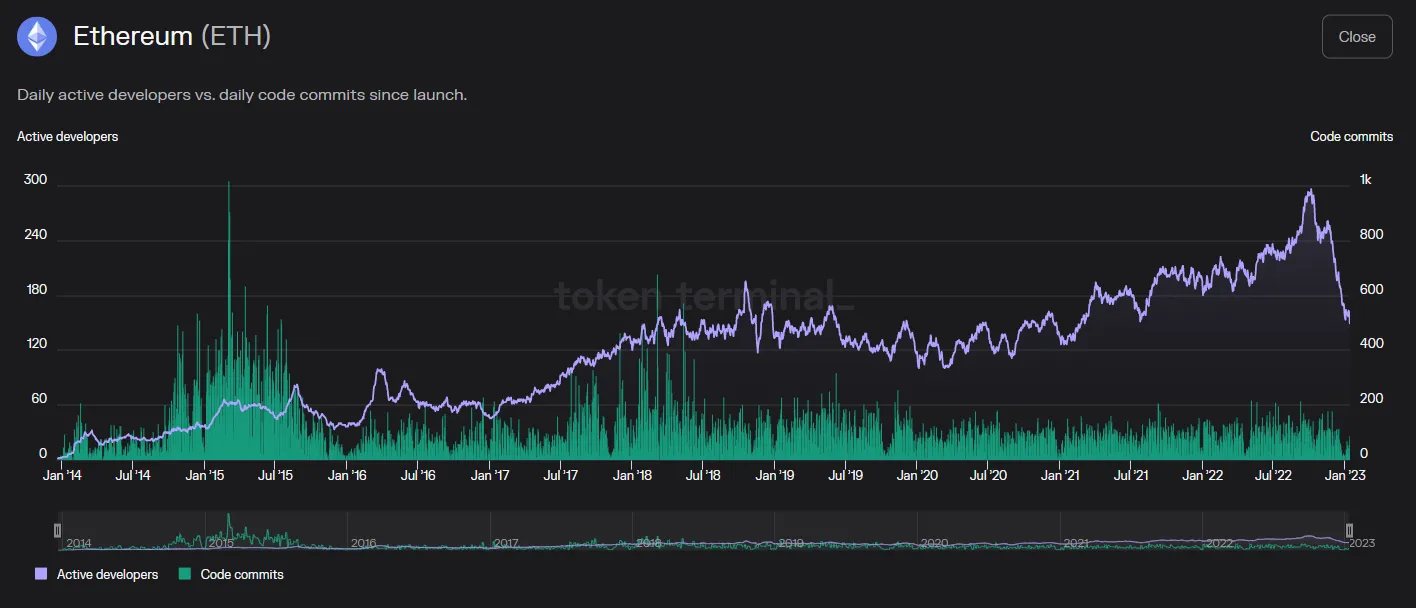
이더리움 및 기타 블록체인의 장기적 생존 가능성을 모니터링할 때 추적해야 할 많은 데이터 포인트가 있습니다. 다음 지표는 이 단계에서 가장 많은 신호를 제공합니다.
개발자 수 및 개발자 성장
데이터 소스: 토큰 터미널
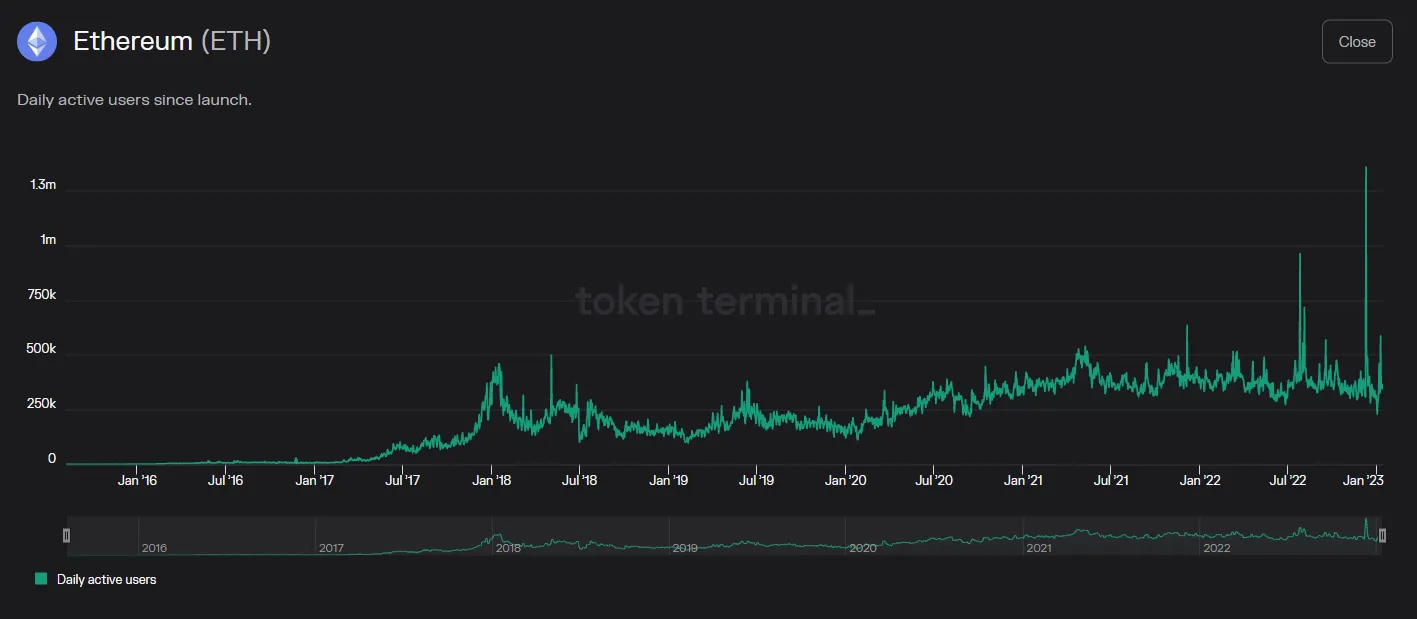
지난 6년 동안 이더리움 개발자의 연평균 성장률은 32%였습니다. 우리는 최근 감소를 모니터링하고 있지만 대부분 계절적이라고 생각합니다. 흥미롭게도 코드 커밋은 몇 년 동안 이전보다 감소했습니다. 이는 구성 가능한 오픈 소스 코드의 힘 때문입니다. 각 문제는 한 번만 해결되면 다른 사람들이 그 위에 빌드할 수 있습니다. 서로 연결되는 레고 블록과 같습니다.
활성 사용자 수 및 사용자 증가
데이터 소스: 토큰 터미널

일일 활성 사용자는 현재 약 400,000명이며 성장은 상당히 안정적입니다. 2016년 이후 사용자는 CAGR 92.9%, 2017년 이후 38% 성장했습니다. 2022년 가입자는 2021년에 비해 약 3% 감소했습니다.
데이터 소스: Etherscan
소득
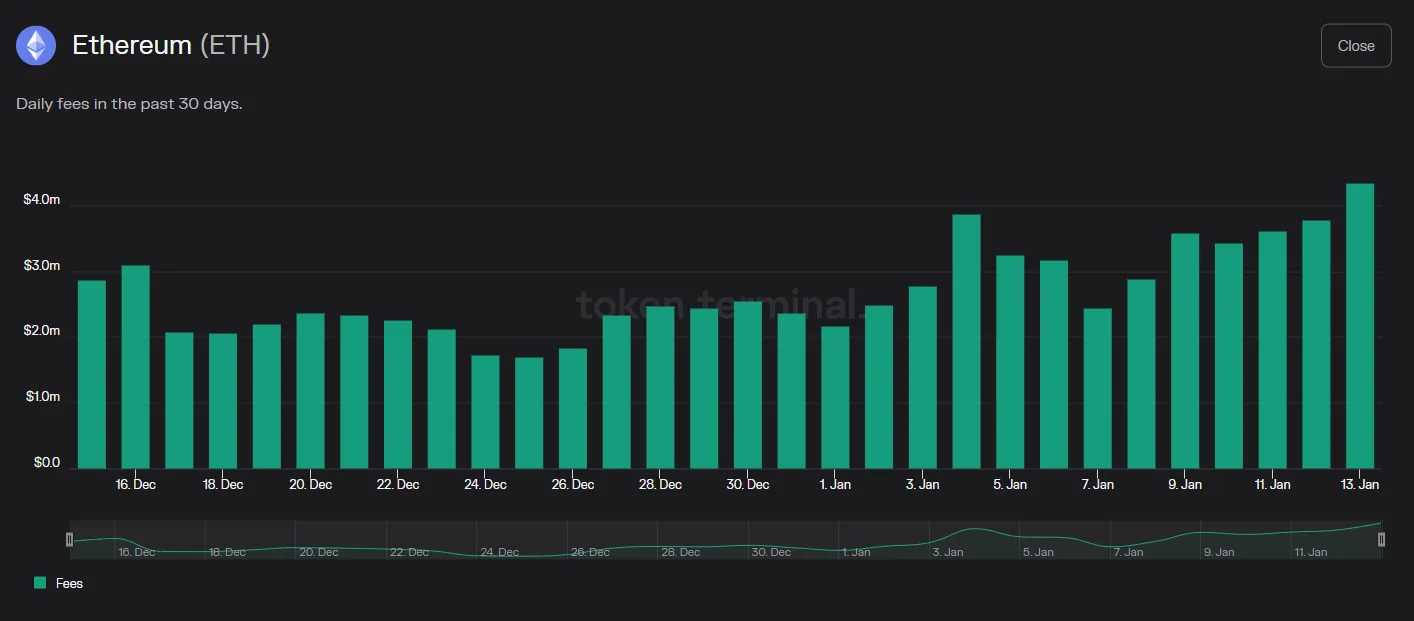
가격 하락에도 불구하고 거래량은 작년에 잘 버텼습니다. 네트워크는 올해 12% 감소했습니다. 지난 6년 동안 76%, 지난 5년 동안 32%의 CAGR로 성장했습니다. 레이어 2가 확장됨에 따라 기본 레이어의 트랜잭션 증가가 평준화되기 시작합니다.
소득
이미지 설명데이터 소스: 토큰 터미널이더리움의 수익 수치는 여전히 강세를 유지하고 있습니다. 지난 30일 동안 네트워크의 일일 평균 판매액은 약 260만 달러였습니다. 지난 6년간 연평균 성장률은 454%입니다. 보다 활동적인 2017년부터 시작하면 5년 동안의 CAGR은 146%이며 2022년과 2021년에는 58% 감소합니다.
작년 솔라나에서 본 것처럼 조작도 가능합니다.

